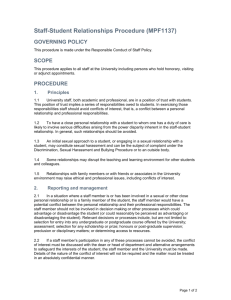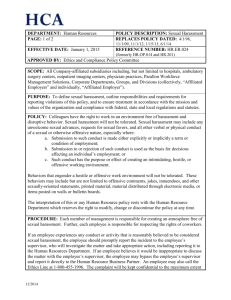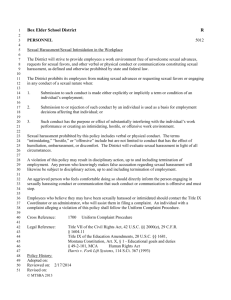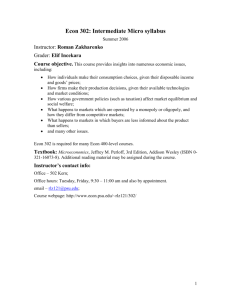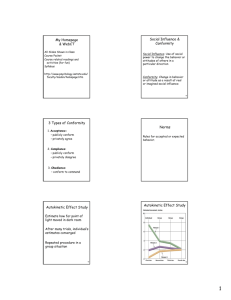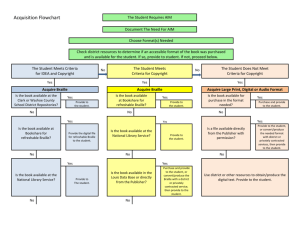Strategies for Dealing with Troublesome Behaviors in the Classroom
advertisement
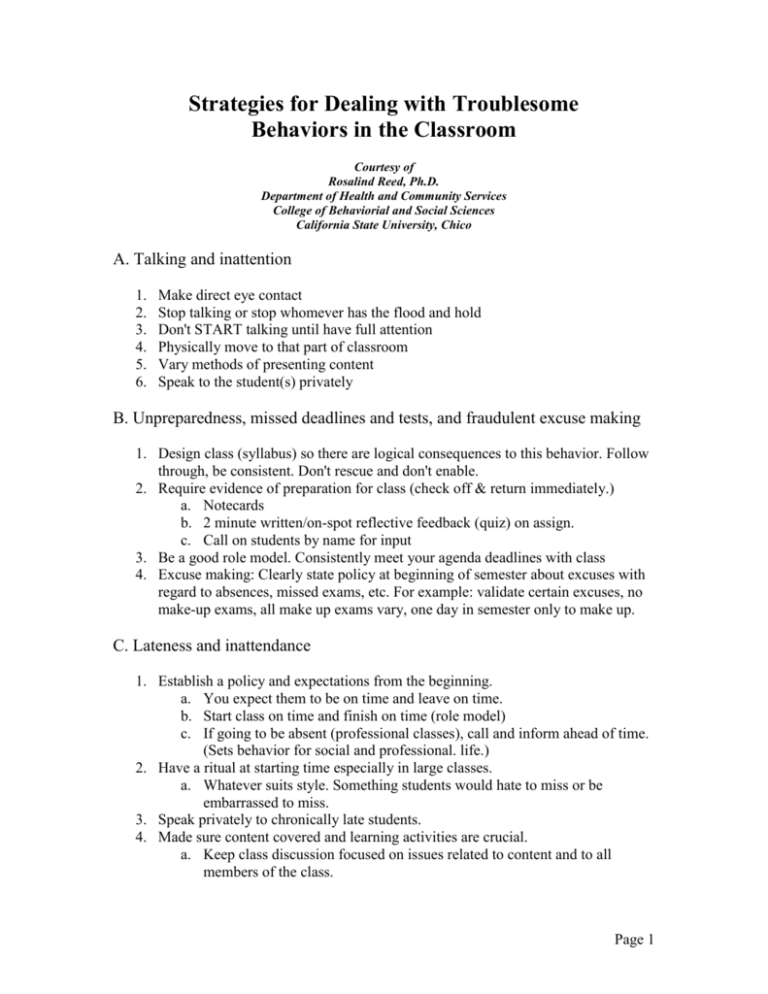
Strategies for Dealing with Troublesome Behaviors in the Classroom Courtesy of Rosalind Reed, Ph.D. Department of Health and Community Services College of Behaviorial and Social Sciences California State University, Chico A. Talking and inattention 1. 2. 3. 4. 5. 6. Make direct eye contact Stop talking or stop whomever has the flood and hold Don't START talking until have full attention Physically move to that part of classroom Vary methods of presenting content Speak to the student(s) privately B. Unpreparedness, missed deadlines and tests, and fraudulent excuse making 1. Design class (syllabus) so there are logical consequences to this behavior. Follow through, be consistent. Don't rescue and don't enable. 2. Require evidence of preparation for class (check off & return immediately.) a. Notecards b. 2 minute written/on-spot reflective feedback (quiz) on assign. c. Call on students by name for input 3. Be a good role model. Consistently meet your agenda deadlines with class 4. Excuse making: Clearly state policy at beginning of semester about excuses with regard to absences, missed exams, etc. For example: validate certain excuses, no make-up exams, all make up exams vary, one day in semester only to make up. C. Lateness and inattendance 1. Establish a policy and expectations from the beginning. a. You expect them to be on time and leave on time. b. Start class on time and finish on time (role model) c. If going to be absent (professional classes), call and inform ahead of time. (Sets behavior for social and professional. life.) 2. Have a ritual at starting time especially in large classes. a. Whatever suits style. Something students would hate to miss or be embarrassed to miss. 3. Speak privately to chronically late students. 4. Made sure content covered and learning activities are crucial. a. Keep class discussion focused on issues related to content and to all members of the class. Page 1 5. Logical consequences to missing and being late. Instructor does not own the problem. Do not reteach class. a. Student is responsible for getting missed assignments and material. b. Don't rescue. 6. Specifically recognize a late student when he/she comes in. "Hi how are you today." Have them sing, or other." D. Challenges to authority 1. Don't become defensive. Explain (not defend) instructional objectives and how assignments fit. 2. If student presses in class, ask to continue discussion later, privately 3. Be honest if something REALLY isn't working. (but watch for manipulations) 4. Saying NO assertively (not aggressively or submissively) E. Overt HOSTILITY from a student Verbally aggressive. Usually become verbally abusive in frustrating situations which they see as being beyond their control; anger and frustration becomes displaced onto others; fear of rejection and feelings of righteous indignation are frequently associated with this pattern. 1. Talk to student privately a. In neutral setting b. Try to find a common ground 2. Write letter to student describing his/her behavior, how behavior disrupts you and others, restate expectations and request behavior change. Copy letter to . . . 3. Check out your interaction style with person a. defensive? b. authoritarian? c. condescending? d. loaded words? e. flaunting power? f. unreasonable, unclear demands g. atmosphere of mistrust 4. There may be times when ignoring is best . . . 5. Violent, aggressive verbal attack DO 1. Allow them to ventilate 2. Recognize feelings. "I can see you're very upset." 3. Tell them that you can't deal with verbal abuse "When you yell at me, it's hard to hear what you are saying." 4. Reduce stimulation. Invite person to a quiet place to talk Page 2 DON'T 5. 6. 7. 8. Get in an argument Press for explanation of behavior. "Why are you acting like this? " Walk away from person Get others to help you quiet them down i.e. other student, faculty, etc. F. Requests for special consideration e.g. extra credit, retake test, reschedule final, redo paper 1. Only if same contract is offered to all students in the course 2. Must consider your time on and value of G. Sexual hits and sexual harassment 1. Ignore come-ons. Act as if you are not aware. Don't reinforce in any way. Keep with professional agenda. 2. Address harassment personally, privately, and directly. Request the ceasing of specified behaviors. If not, see Dean and take through the process. Page 3 Examples of Troublesome Student Behaviors in the Classroom 1. Having authority challenged 2. Talking out of turn 3. Making statements that seemingly have nothing to do with topic 4. Coming late to class 5. Leaving early w/o notification 6. Backpack shuffle 7. Eating in the classroom 8. Doing homework for other classes 9. Reading the newspaper 10. Sleeping 11. Visiting 12. Making racist, sexist, homophobic remarks about others 13. Talking about students behind their backs 14. Consumer mentality: I paid for this therefore I want . . . 15. Using the classroom as a political/religious platform 16. Dominating discussion 17. Refusing to participate 18. Discrediting person rather than disagreeing with idea 19. Coming to class unprepared 20. Missing deadlines 21. Constantly phoning office or home 22. Missing class with no notice or legitimate reason and then demanding make ups, etc. 23. Arguing relentlessly over a grade 24. Demanding special treatment because of . . . whatever. . . (Extra Credit, another test date, drop a grade, etc.) 25. Cheating (another entire session) 26. Fraudulent excuse making 27. Sexual hits & sexual harassment 28. Hostile verbal attacks 29. ? ? ? ? ? From the National Teaching and Learning Forum, October 1997, Vol. 6, No. 6 Page 4

